Opening Ceremony
The 70th General Assembly of the CIC opened on Friday 19 April 2024, in Cascais, Portugal, with some 350 delegates attending from across the globe.
Held under the theme “Bridges to Biodiversity,” the conference sought to explore the organisation’s role as a convener, uniting diverse stakeholders in support of the 2030 Global Biodiversity Framework (GBF) with the implementation of the 2030 Strategic Plan, which was adopted as part of proceedings.
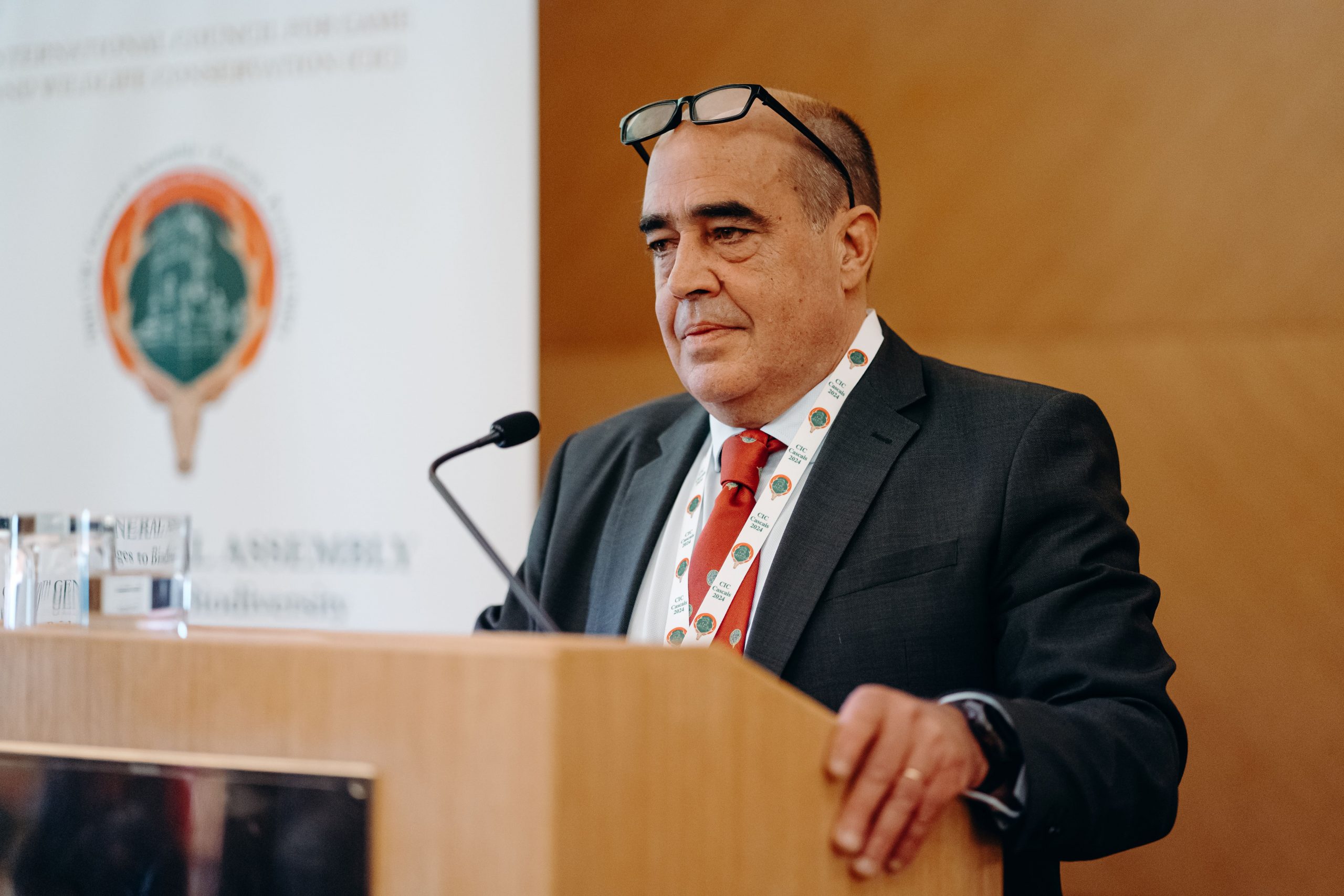
Sebastian Winkler, Director General of the CIC
Sebastian Winkler, Director General of the CIC, welcomed participants and invited them to listen to the CIC Hymn and the Portuguese National Anthem.
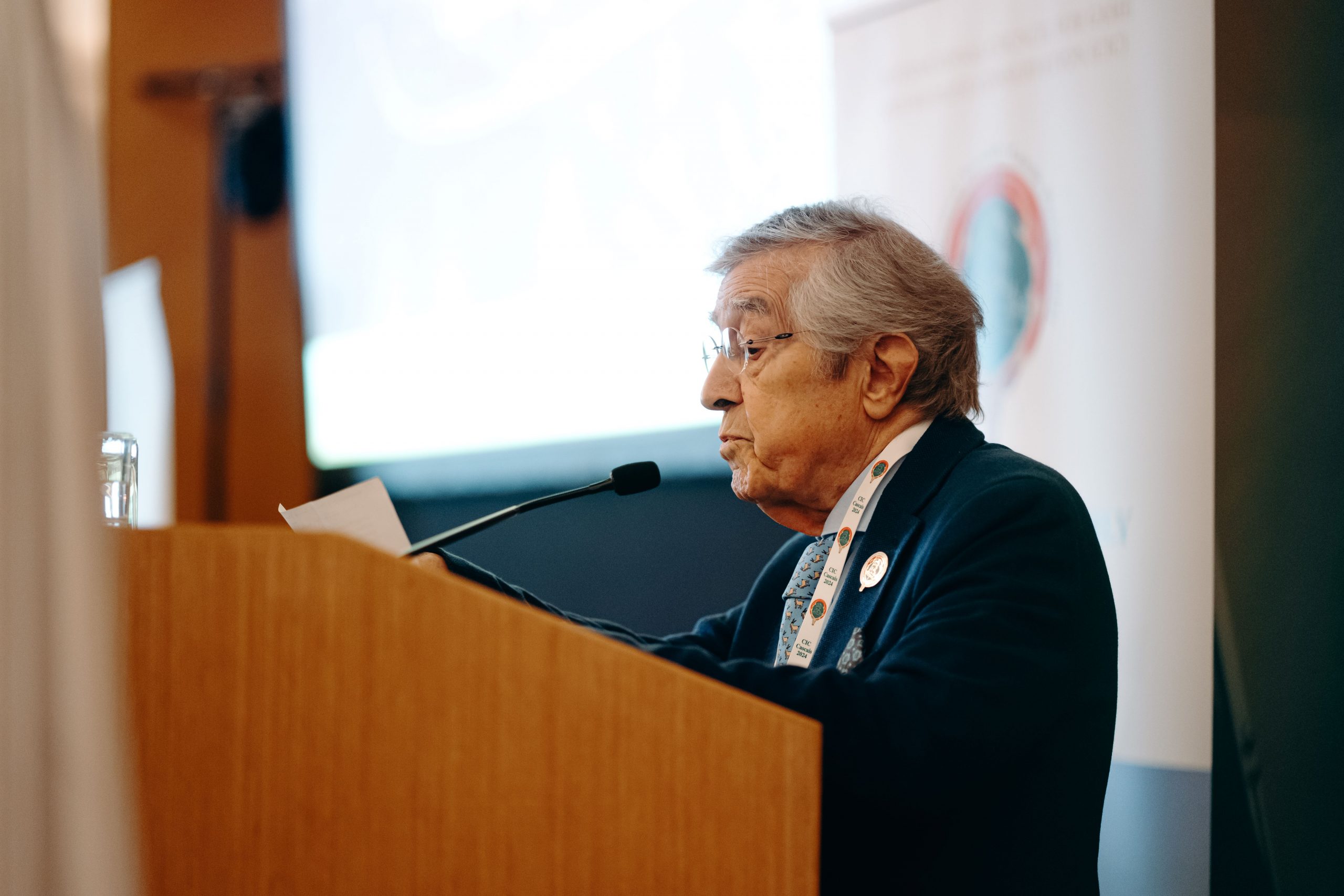
Álvaro Moreira, Head of the Portuguese Delegation of the CIC
In his welcome address, Álvaro Moreira, Head of Portuguese Delegation of the CIC, commended the Assembly’s return to Portugal after 61 years. He stressed that the 70th General Assembly’s theme is reflective of Portuguese history and noted that science shows that responsible hunting contributes positively to biodiversity and the health of ecosystems.
Describing hunters as nature protectors, he noted that there is a need to protect what they love through conservation.
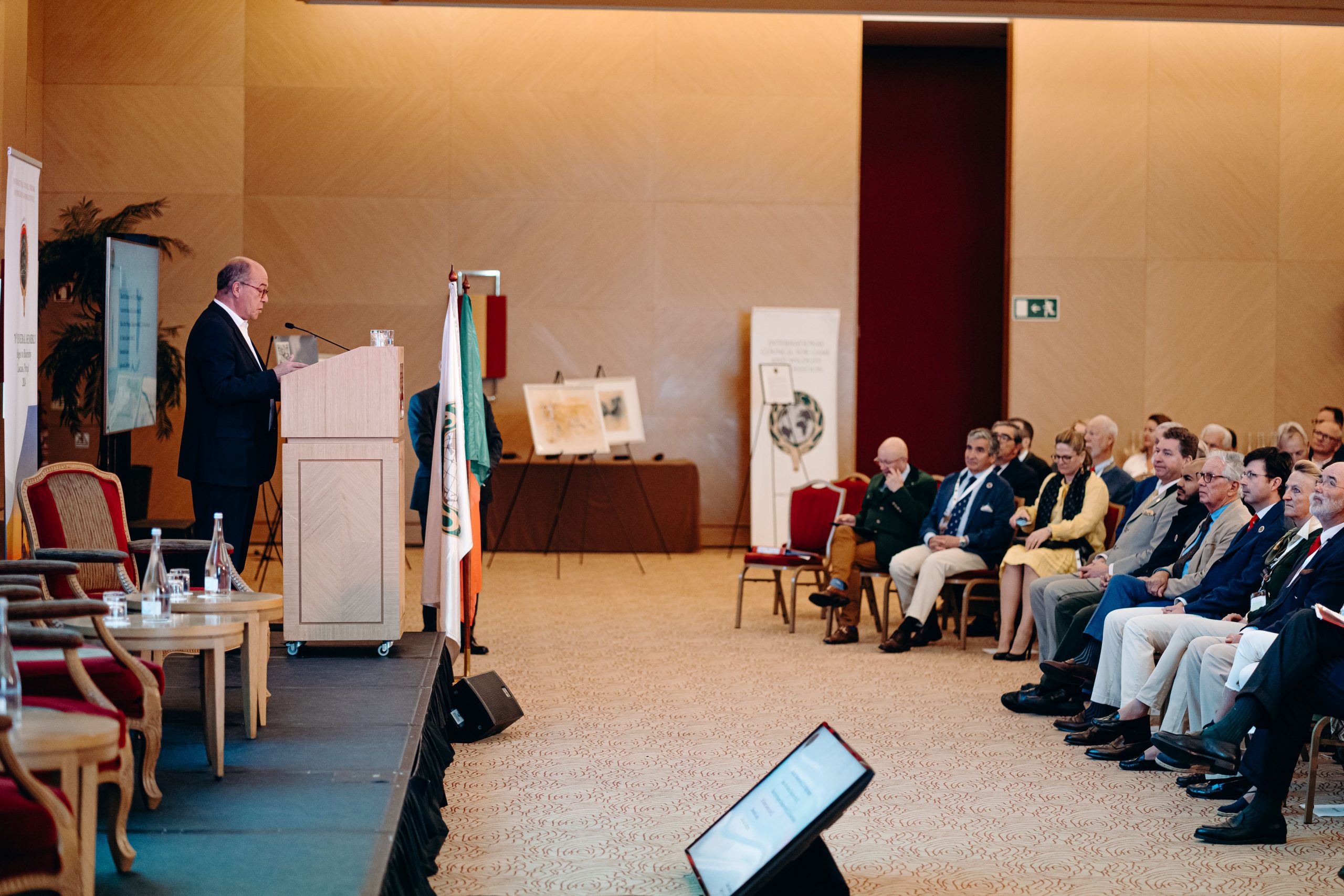
Carlos Carreiras, Mayor of Cascais
Carlos Carreiras, Mayor of Cascais, then addressed participants to talk about the intrinsic bond between humans, animals and the environment, describing the impacts of climate change. He noted that political decision-makers should balance the organic growth of a city with sustainable planning, while stressing that sustainable hunting plays a critical role in managing ecosystems, especially when natural predators are absent.
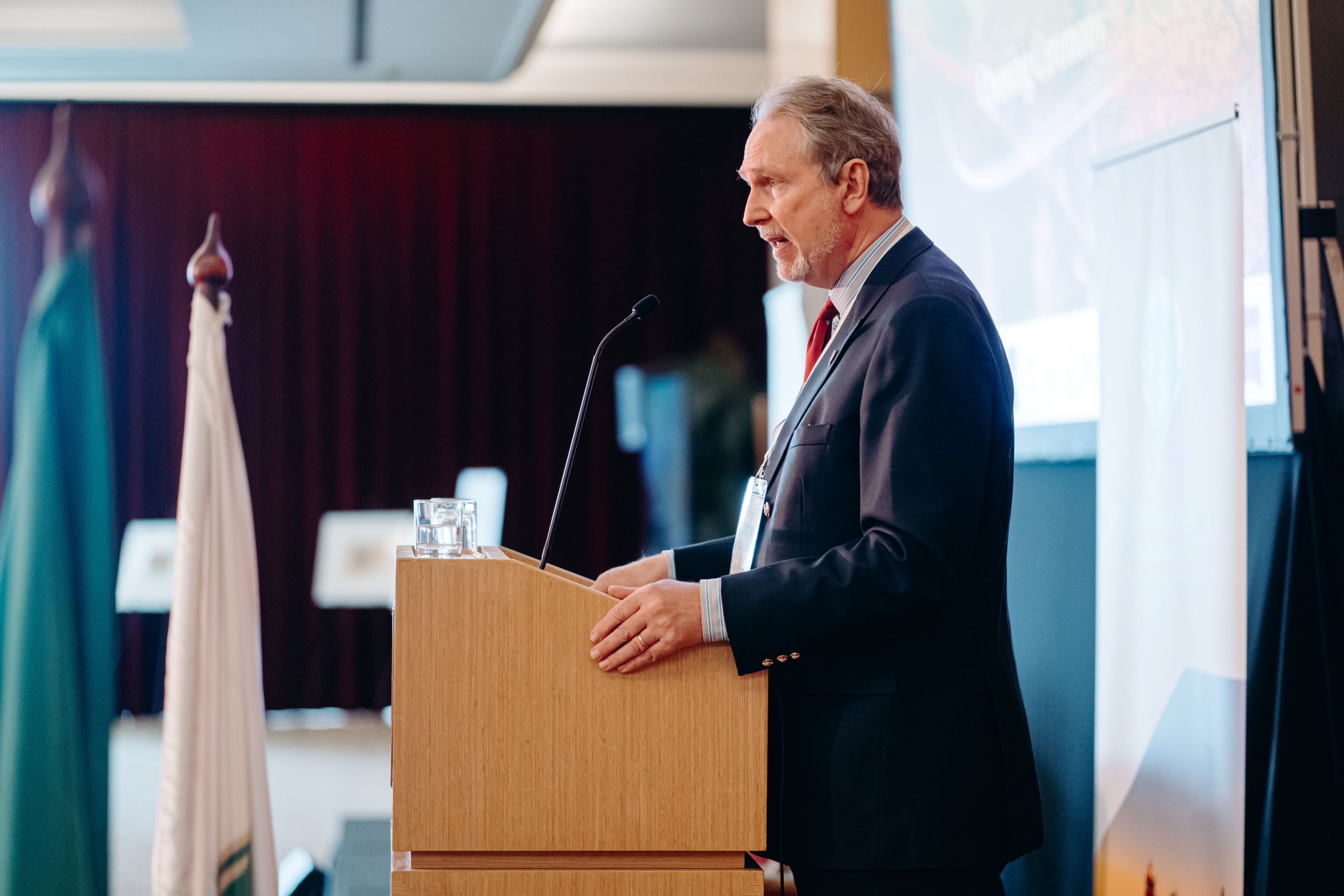
Dr. Philipp Harmer, President of the CIC
In his opening address, Dr. Philipp Harmer, President of the CIC, drew attention to the triple planetary crisis of pollution, climate change and biodiversity loss, stressing biodiversity loss as a tragedy for hunters.
Referencing the CIC’s work on the GBF and the goals pertaining to the sustainable use of nature, Dr. Harmer emphasized the organisation’s current focus on building bridges to biodiversity. He stressed that hunters render a service to nature and to society and underlined his belief that the sustainable use of nature adds value to biodiversity.
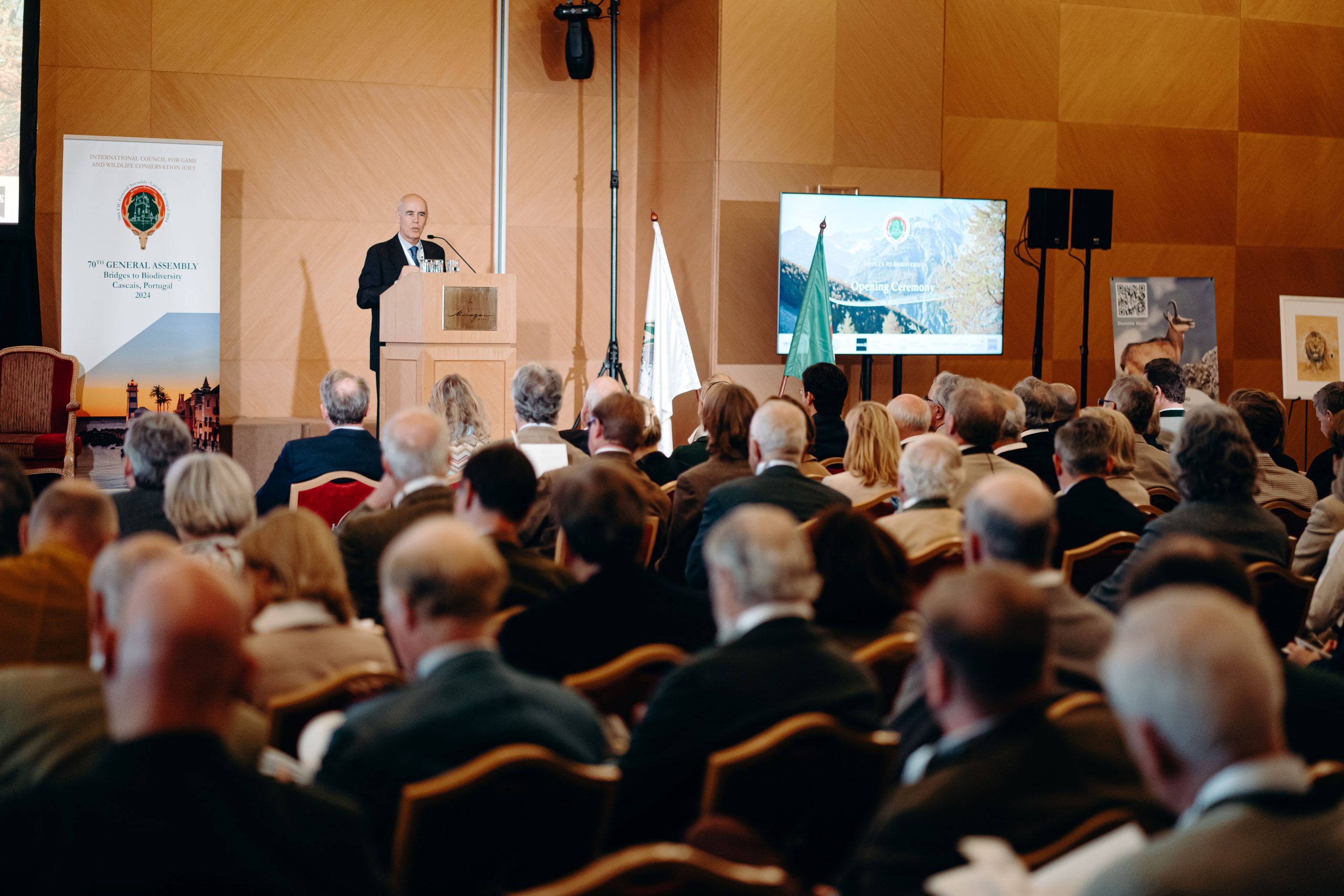
Humberto Delgado Rosa, Director for Biodiversity, DG Environment, European Commission
In his keynote address, Humberto Delgado Rosa, Director for Biodiversity, DG Environment, European Commission, stressed the preservation and restoration of nature as a core principle of the GBF and of the EU 2030 Biodiversity Strategy.
He described the degradation of the integrity of the biosphere upon which our society and economy depend and noted the GBF as a sign of hope. With hunting dependent on thriving ecosystems, it was noted that hunters are often landowners, farmers or foresters that understand the problems and protests better than other stakeholders.
On the path ahead, he discussed building consensus around several topics, such as strictly protected areas, the impact of invasive species within these areas and the role of hunting to control them. The role of hunters in the management of large carnivores – such as wolves – was also touched upon, as well as hunting within existing management plans such as the EU Birds Directive, and its positive impact on the European turtle dove (Streptopelia turtur).
Hunting in Portugal
Introducing Portugal and a national perspective on hunting to give context to the 70th General Assembly was Dr. Artur Torres Pereira, President of the CIC Portuguese National General Assembly and President of the Clube Português de Monteiros.
He described Portugal as a tourist destination and a hunting destination, detailing the four types of hunting zones currently found in the country: national; municipal; tourism hunting zones; and zones managed by hunting associations.
Among the challenges mentioned in relation to hunting today were political attacks, recognising the added value that hunting brings (including scaling up tourism hunting) and a failure to capitalize on the value of Portuguese game meat.
Looking to the future, he called for the generation of more reliable scientific knowledge; improved training for gamekeepers; curbing irresponsible social media use; divulgating conservation success stories such as the reintroduction of the Iberian lynx; and for a national hunting strategy based on science and knowledge.
Bridges to Biodiversity: Spotlight on the Portuguese Perspective
The session was moderated by Dr. Artur Torres Pereira, President of CIC Portuguese National General Assembly & President Clube Português de Monteiros.
In the ensuing panel discussion, Rui Pombo, Member of the Board of Directors of the Instituto da Conservação da Natureza e das Florestas (ICNF), gave an overview of the current state of hunting in Portugal. With 7 million hectares of hunting areas in Portugal – amounting to almost 80% of continental Portugal – hunting generates more than €10 million for the state per annum.
Since 2018, much of this funding goes towards education and wildlife projects. Despite the positive role the state can play as a regulatory body in sustainably developing the sector, it was suggested that hunters as individuals are the most important stakeholders in the management of ecosystems. In this regard, effective communication with the population was stated as being decisive for the future success of the issues.
Also touching on the importance of communications was Helena Freitas, Universidade de Coimbra, who noted the need to emphasise the role of hunting as a service to the public, in place of the historic legacy image of hunter. To help address hunting’s image, it was suggested that conflict management, One Health, and a focus on the scientific process should be areas to focus on.
The scientific process was a common theme throughout the session, with Dr. Paulo Célio Alves, Associate Professor at the University of Porto, presenting a case study on the synergistic nature between hunting and nature conservation by talking about the reintroduction of the Iberian lynx in Portugal. A rabbit researcher by trade, he detailed how his work had become popularised by those looking to reintroduce lynx which predate on rabbit. Hunters played a key role in this the project, as they naturally maintained rabbit habitats given their vested interest in their population health.
João Maria Bravo, President of Sodarca Group, was able to provide his perspective of hunting in Portugal as a hunting tourism operator specialising in red-legged partridge. Operating the most popular site in Portugal for red-legged partridge hunting, João Maria Bravo emphasised that the 30,000 or so partridges shot on the property all are consumed and never destroyed, with some even given out to hospitals. He also touched on the use of science as part of their work, sending samples as far as Spain to ensure the best possible results.
Discussing the need to build bridges between hunters and ecologists in Portugal was Dr. José A. Alves, Principal Researcher at CESAM and the University of Aveiro. Touching on his experience as a migratory species specialist, Dr. Alves gave an example of how GPS tags from shot migratory waders were often not returned to researchers, despite contact information being provided on the tag itself. The need to build cooperation in general was emphasised, considering the significance of research into migratory species – which are particularly impacted by environmental change – thereby serving as a great model to study the triple planetary crisis (climate change, pollution and biodiversity loss).
Bridging Hunting Communities: Enabling a Connected Hunting and Game Management Experience
Carl von Eckermann, CEO of Natlink, addressed participants during this session introducing them to Natlink, a hunting tech company from Sweden that crafts a state-of-the-art digital ecosystem for connected hunting and outdoor adventure.
Through their platform WeHunt – which is available via computer or app – they offer a full end solution to help hunters, individuals, industry, communities and more to plan and conduct hunts, digitialising the way hunting has been done for thousands of years.
Analyzing hunts using statistics, data and science, the platform allows users to see what is shot, how much time is spent, all while allowing people to record and replay the whole hunt.
Natlink was stated as being a champion for regulation, giving the example of in-app maps that allow users to see which areas do not allow shooting with lead shot, ensuring that hunters abide by and support lead based policies.
Another case study given on how the app can serve as a cost saving entity for the whole industry, which was shown during the recent outbreak of African Swine Fever (ASF) in Sweden.
The outbreak there was resolved in less than a year, facilitated by the WeHunt platform, which allowed Swedish hunters to go out of their own accord to search and record instances of ASF, ultimately saving Swedish taxpayers millions of euros.
Bridging Humanity: Unveiling the Untold Stories of Hunting and Conservation
Dr. Zoltán Kovács, State Secretary for International Communication and Relations of Hungary and Head of the Hungarian Delegation of the CIC, introduced the session, stressing the importance of controlling the narrative around hunting. He noted that the narrative often matters more than content and substance, while always being more political. It was stressed that the hunting community has to adapt to the times and counter the rise of a movement that often disregards the rules and science, preferring to make their narrative about emotions.
He called for working on the political level, drawing attention to Hungary taking the Presidency of the European Council in July as an opportunity to present CIC suggestions.
In his keynote address, Dr. Robert Kroger, Founder and Executive Director of Blood Origins, stressed that hunters have a great story but are not doing a good job at telling it. Stating that hunters should be talking to non-hunters, it was suggested the aim should be to alter the views of at least 35% of non-hunters.
When pondering what message to convey, a shared humanity and conveying the truth about hunting from the heart was put forward to delegates. As a challenge, he underscored the difficulty of convincing non-hunters that killing is ok and the need to change perceptions.
He explored the pitfalls of social media and provided examples of the role of hunters in protecting the environment, such as that of duck hunters in the Australian state of Victoria in preserving wetlands, placing nest boxes to support duck populations, or the role of hunters in protecting sea turtles by reducing egg predation. Further examples were given relating to hunter-generated funds in improving the conditions of local communities, or through investments in education. To conclude, Dr. Kroger described hunters as wildlife and human caregivers and called on them to communicate in a purposeful, honest and authentic manner.
Bridging Continents: North American Insights for Global Conservation
With the panellists in attendance representing some of the most important wildlife institutions in the US and Canada, this session was moderated by Shane Mahoney, President of the CIC Policy and Law Division and President of Conservation Visions.
Launching into an overview of the North American Model of Conservation – its history and relevance to modern day concepts on biodiversity conservation – the introduction was a reflection on the cyclical nature of history and its relevance for conservation.
In this context, it was noted that the concept of sustainable use – which is an integral part of all major environmental intuitions today – was raised by US President Theodore Roosevelt at a CIC meeting back in 1930. The idea of protected areas was also put forward by American naturalist John Muir in the late 1800s. Reflecting on the past, therefore, was suggested as a way to find new approaches to other sustainable development issues today, such as those facing Indigenous Peoples and Local Peoples (IPLCs).
Linking into the GA theme “Bridges to Biodiversity”, it was stated that the aim for this session was to bridge North American ideas on conservation with those of other continents and indeed globally.
Ronald J. Regan, Executive Director for the Association of Fish & Wildlife Agencies, provided an overview of his Association’s history and noted it aspired to the vision of conservation as a global construct.
He noted the Association was founded in 1902 to address mutual interests, and the first meeting agenda included license fees, honey management and migratory birds.
Today the Association has headquarters in Washington DC, is non-partisan, and follows the North American Conservation Model while engaging with international treaties such as the Convention on International Trade in Endangered Species of Wild Fauna and Flora (CITES) and the Convention on Biological Diversity (CBD). Expanding on their structure and leadership, it was noted that the participation rates in the US are 5% for hunting and 15% for fishing.
Tony Wasley, President of Wildlife Management Institute (WMI), noted similarities in issues and perspectives. He said that WMI was born out of a crisis in 1911 when realization set in that wildlife in the new world was not unlimited and inexhaustible but being over-exploited with species pushed to the brink of extinction.
Wasley discussed WMI priorities, such as focusing on science and education, endorsing biodiversity and ecology, and a recognition that wildlife is part of the planet’s wealth. Drawing attention to bridging scientific gaps, the cooperative research units located in 41 of the 50 US states and established in 1935 were referenced.
Benjamin Cassidy, Director of Government Affairs at Safari Club International (SCI), described the nature, philosophy and efforts taking place at SCI. It was noted that SCI helps explain and communicate why the work of a hunter should be celebrated not stigmatised, and underscored efforts in advocacy and conservation.
It was suggested that non-hunters are currently better organised, with more money and proficiency at communications, providing examples of legal actions taken by groups pertaining to black bears in Louisiana, mule deer introductions, and trophy bans passed in the New York State senate.
Providing the perspective of NGOs in a North American context was Corey Mason, CEO of Dallas Safari Club (DSC) and DSC Foundation. Like the CIC, DSC is supported by an active and engaged membership, letting them advocate for national and international science-based conservation efforts supporting sustainable use.
Another parallel comes in the form of sources for funding for the organisations, with the DSC hosting a large annual convention attended by 50,000+ people across the four-day event. One difference with the CIC’s General Assembly lies in DSC’s broad network of international exhibitors, with 1,000 exhibitors setting up shop during the convention.
An additional major point of differentiation is the DSC’s involvement in political advocacy; with the DSC PAC – or Political Action Committee – an instrument used to render support for political candidates in the US aligned with the values of DSC.
Culture Division Session 1: Hunting, Food, and Culture in the Amazon
In his keynote address, Flávio Bezerra Barros, Professor at the Federal University of Pará and Advisor to the Lula Presidency on Indigenous Peoples, discussed biocultural heritage in the Amazon, with its 2000 bird, 710 mammal and 856 reptile species. The session was moderated by Thomas Paulic, Project Coordinator at the CIC.
He highlighted that only Indigenous Peoples are allowed to hunt in his country and called for stronger support to broaden the interest in Indigenous Peoples in Brazil.
Stressing the cultural importance of hunting, including growing up with the cultural knowledge of the forest, he explained how elders inform adolescents of their importance within the community to carry forwards the traditions and the practical knowledge of the forest. He further underscored the spiritual dimension of traditional hunting rules; for instance females of certain species are not hunted at certain times of year, which mirrors other hunting practices.
Touching on the importance of science, it was stated that scientific data can help prove Indigenous Peoples are the best custodians to protect the forest. Ensuing discussions revolved around eliminating deforestation; communicating via the CIC Platform; including knowledge systems; and issues relating to the lack of land tenure.
In closing, it was noted that deforestation leads to monoculture and Indigenous Peoples do not over-exploit, but rather provide great examples of sustainable use, with the CIC having an obligation to sell and promote indigenous use and possibilities.
Culture Division Session 2: Communicating Hunting for Social Acceptance
Sarah Roberts, Environmental Author, British Uplands Podcast, gave a keynote address describing different examples involving difficult communicating issues. The session was moderated by Olivia Pasini, international communications expert.
She explained how shark sporting fishermen in Cornwall, UK hold valuable scientific knowledge but have difficulties communicating about their work even when their activities are at threat of being shut down. This illustrated that unless hunters and fishermen get involved, they will not have a voice and no control over the narrative.
When discussing the need to be aware of communications opportunities, a video of the British Uplands Podcast was shown exploring the threats facing the upland areas, with the different stakeholders refusing to sit down and talk to find common ground despite action being needed.
Footage on deer hunting underscored the value and limitations of taking such activities and their related way of life into the future. Roberts defined barriers to the general public’s understanding of hunting as: exposure (have they spent time in the field), misinformation (if the hunters aren’t speaking up, where is the information coming from), and relatability (noting trophy hunting is a thorny issue).
She subsequently presented the result of a survey questioning the public’s perception of hunting versus poaching; their understanding of government culls; and the role of hunting in conservation.
Tristan Breijer, Policy Advisor for Social Acceptance of Hunting at FACE, provided his organisation’s perspective, stressing that audiences vary widely across different geographical ranges.
Applied Science Division Session 1: Small Game in Europe
Dr. Francis Buner, Head of the CIC Small Game Specialist Group and Head of Wildlife Recovery at GWCT, set the scene for this session by noting that practically all small game species are in decline in Europe.
While regional differences exist, most species are listed on the IUCN Red List, which is largely attributed to habitat deterioration.
Within this larger context, Dr. Buner questioned the practice of releasing game birds, with some 77 million birds released in Europe per year. On the ecological side, it was stated that releasing has no immediate benefit, together with some negative effects. From a public perception standpoint, it was suggested that the practice is also very hard to defend.
To show a possible alternative way forward, a project by the Game and Wildlife Conservation Trust conducted on the estate of the Duke of Norfolk in the UK was presented to delegates.
The estate operates wild bird shoots, with the farm transformed via the introduction of wildlife friendly practices that suit grey partridge including sophisticated predator management and winter feeding. As a result, grey partridge populations have thrived in the area, which has had a compounding effect for biodiversity as a whole.
Building on this discussion on the need for harmonious land use was Péter Pál Hajas, who owns and operates his own farm in Hungary.
By dividing his larger fields into smaller lots, a focus is placed on conserving natural habitats while improving connectivity. Ecosystem services are provided by enhancing the margins on the farm with flowers, helping place the farm in a more stable environment by improving pollination and biological crop protection.
On top of this, regenerative agricultural practices are utilised such as forgoing the use of diesel powered machines and instead harnessing the strength of living roots to improve soil health. By increasing the biological activity of the soil, the farm is profitable enough to not commercialise the shoot and release of game birds, choosing to manage wild populations instead.
Applied Science Division Session 2: Large Carnivore Management in Europe
Giving a keynote address in this session was Dr. Valeria Salvatori, General Secretary of the Istituto di Ecologia Applicata, who expanded on the support for the establishment of local stakeholder platforms on the coexistence between people and large carnivores. The session was moderated by Prof. Dr. Klaus Hackländer, President of the CIC Applied Science Division.
Opening by describing the distribution of large carnivores in Europe and their increased numbers over time, she then went on to discuss tackling the impact of large carnivores, noting that their management is usually very poor.
She underscored how a lot of money is spent on compensation rather than on prevention measures; in this regard Germany was mentioned as doing better than Italy in investing in preventive measures.
Over the past ten years, she stated that there has been a paradigm shift from purely technical approaches to ones that include other interest groups while avoiding a top-down approach. This shift has led to the establishment of a stakeholder platform, with space for dialogue.
She concluded that large carnivores are increasingly reported in human dominated landscapes and their presence needs managing. It was also noted that there is a need to manage people, to avoid them treating and feeding carnivores like pets, which requires communications efforts.
João Carvalho, Secretary General of the Portuguese Chapter of the European Landowners’ Organization, then went on to detail the recovery of the Iberian lynx population as one of the biggest conservation projects held in Portugal.
The role of landowners in conserving biodiversity and their critical importance in lynx recovery was highlighted; he explained the consultative strategy which eventually permitted all parties to come on board for the lynx to be released into the wild.
This was preceded by the lynx being bred in captivity, which came with an initial lack of trust from different stakeholders with communications playing a vital role in breaking down barriers.
The first 16 lynxes were received in 2009 and the first release into the wild happened in 2004. To date, the country now has over 300 monitored lynx in the wild, which is hailed as a great conservation success story, one dependent on the involvement of landowners who manage their properties in a way that provides optimal conditions for the lynx, including water sources and prey.
The project was tied to a communications campaign in Lisbon and Porto to inform the general public that wild lynxes were born and protected on hunting estates.
Policy and Law Division Sessions 1 & 2: The Conservation Relevancies of Wild Meat Harvesting
This session explored the topic of wild meat through the lens of two distinct perspectives, highlighting its importance for wider society and discussing pertinent ongoing issues for the future.
Dr. Lauren Coad, CIFOR Bushmeat Initiative, gave a presentation on Hunting for Food in the Tropics: A Practice Let Down by Policy?
Wild meat is a key source of food in the global south, with an estimated 40% of rural households harvesting wild meat and almost all households consuming it at some point during the year. In central Africa, on average 18% of protein needs are met by wild meat (up to 100% in rural areas), the equivalent of 1.35 million tons of meat a year.
With this in mind, it was noted that unsustainable hunting is a key threat to biodiversity in the region. Giving Gabon as an example, she stated that many of the hunting practices there are entirely illegal despite the large majority of rural inhabitants hunting on a daily basis. This highlighted the incompatibility of national wildlife policies with the realities occurring on the ground.
Dr. Coad then referred to the work of a Food and Agriculture Organization of the United Nations (FAO) operated initiative – SWM Sustainable Wildlife Management Programme / Legal Hub – which aims to combat this issue. By analyzing, comparing and compiling national wildlife laws, the Legal Hub enables effective policy reform to support sustainable wild meat harvesting practices.
This was followed by a keynote address from Shane Mahoney, President of Conservation Visions (Wild Harvest Initiative) and President of CIC Policy and Law Division, who provided an in-depth look at the Wild Harvest Initiative, which was founded in 2015 through his organisation Conservation Visions.
He noted that the Initiative was created in response to a simple question: how many wild animals are killed and eaten throughout North America? By leveraging the fact that data is collected in a similar fashion in the region due to the shared North American Model of Wildlife Conservation, the Wild Harvest Initiative has been able to unearth just what they sought out to do.
Since its establishment, Wild Harvest has also investigated the way in which people share their food with their Social Sharing Index, as well as the potential cost to replace wild food with industrially farmed alternatives.
The CIC joined the Wild Harvest Initiative as a partner in 2023, as did Jamma International, which operates in Africa. These partnerships and joint plans of action will help expand the Wild Harvest concept globally and gather more information on wild meat consumption.
